The Typographic Matchmaking in the City, Propositions for a Pluralist Public Space.
Edited by Huda Smitshuijzen AbiFares
Published by Khatt Books. Amsterdam. 2011.
Highly illustrated 396 pages in color.
Languages: Dutch, English, and Arabic.
Size: 21 cm x 28 cm.
Soft cover with flaps.
Order at http://www.khattbooks.com/
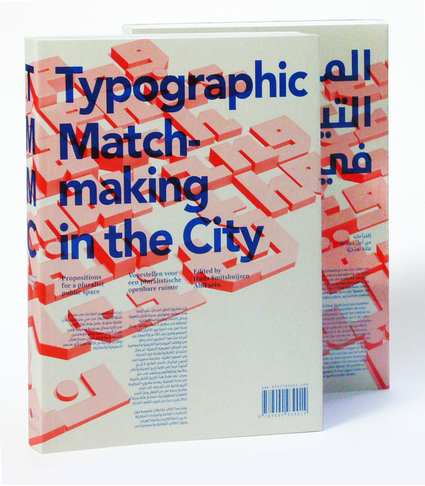
The Typographic Matchmaking in the City book offers a brief range of essays that discuss the complex topic of public space from their respective authors’ individual experiences and perspectives. Through specific anecdotes, they elucidate the problematics and implications of designing for “public space” and multicultural communities. These essays frame and contextualize the research and designs presented by the five teams participating in the Typographic Matchmaking in the City project. They briefly shed light on the function and role of text in architectural spaces, discussing specific historical and contemporary examples from cities like Beirut, Dubai, Muscat, Cairo, Rotterdam and Amsterdam, and addressing the various roles of monumental typography in public space.
The authors include Dr Howayda Al Harithi (American University of Beirut), Zeina Maasri (American University of Beirut), Fadi Shayya (Dar al Handasa), Todd Reisz (Al Manakh 2, editor), Gerard Hadders, Sinan Hassan, Hashim Sarkis, Peter Bilak. In addition, the book presents the research projects of the 5 teams in a highly illustrated sketchbook style that visually explains the design process leading to the final results of public art propositions and typefaces.
This book, like the design research project that preceded it, provides concrete observations on differences as well as shared principles between the Latin and Arabic scripts, and on cultural and architectural conventions for the use of typographic design in three-dimensional urban space in different cities and cultural contexts. It raises thoughtful questions and provides useful tools that designers can use in creating new works for interventions in their own cities.
-
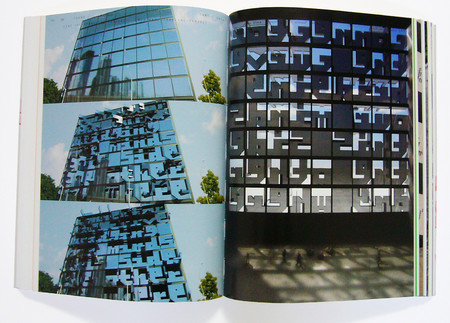
Image: 12 Dec 2010
TMMC Book : StoryLine Spread1
Sample pages from the proposition for a potential design application in public space of the StoryLine Project. StoryLine Project, is a design research collaboration for an architectural dual-script...
-
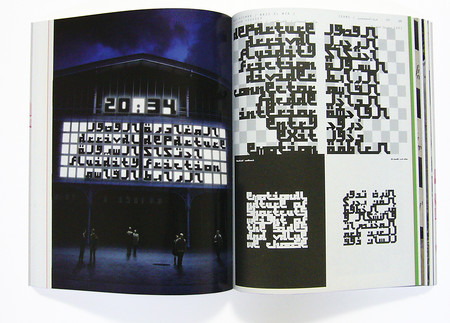
Image: 12 Dec 2010
TMMC Book : StoryLine Spread2
Sample pages from the proposition for a potential design application in public space and specimen sheet of the StoryLine Project. StoryLine Project, is a design research collaboration for an...
-
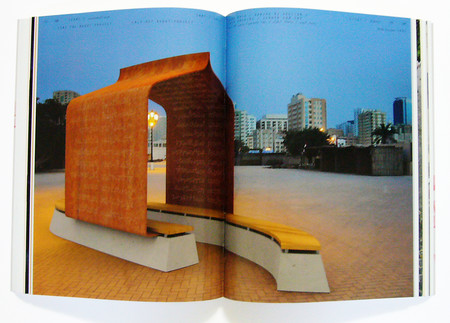
Image: 12 Dec 2010
TMMC Book : Nuqat Spread1
Sample pages from the proposition for a potential design application in public space of the Nuqat Project. Nuqat Project, is a design research collaboration for an architectural dual-script (Latin...
-
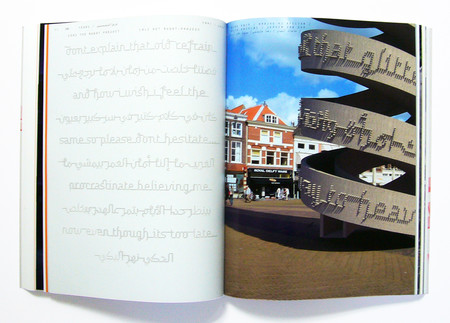
Image: 13 Dec 2010
TMMC Book : Nuqat Spread2
Sample pages from the proposition for a potential design application in public space and specimen sheet of the Nuqat Project. Nuqat Project, is a design research collaboration for an architectural...
-
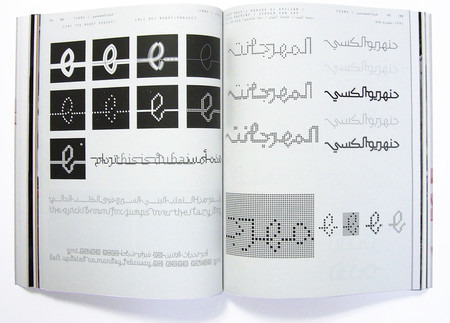
Image: 13 Dec 2010
TMMC Book : Nuqat Spread3
Sample pages from the design process and sketches section of the Nuqat Project. Nuqat Project, is a design research collaboration for an architectural dual-script (Latin and Arabic) lettering system.
-
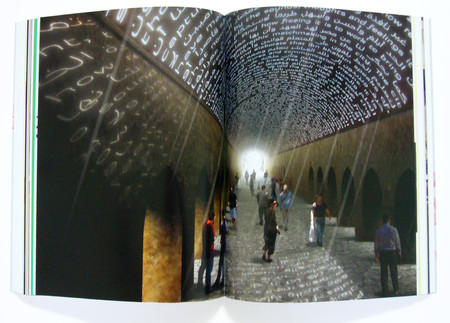
Image: 12 Dec 2010
TMMC Book : Hamsa Spread1
Sample pages from the proposition for a potential design application in public space of the Hamsa Project. Hamsa Project, is a design research collaboration for an architectural dual-script (Latin...
-
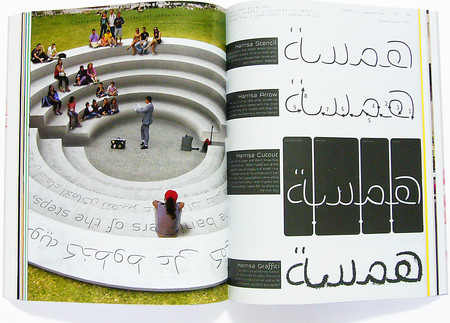
Image: 14 Dec 2010
TMMC Book : Hamsa Spread2
Sample pages from the proposition for a potential design application in public space and a specimen sheet of the Hamsa Project. Hamsa Project, is a design research collaboration for an architectural...
-
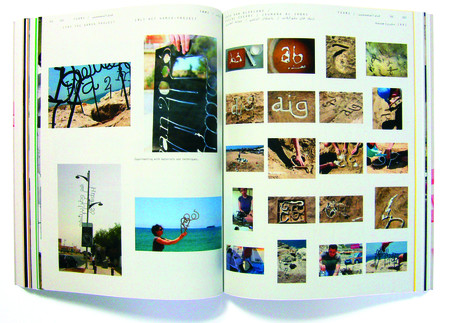
Image: 13 Dec 2010
TMMC Book : Hamsa Spread3
Sample pages from the design process and sketches section of the Hamsa Project. Hamsa Project, is a design research collaboration for an architectural dual-script (Latin and Arabic) lettering system.
-
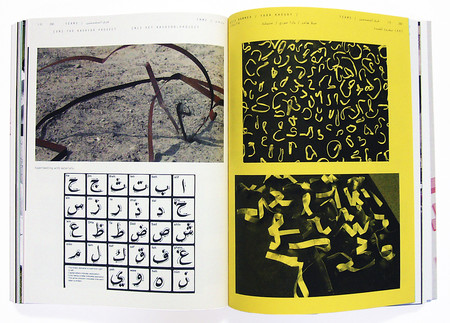
Image: 12 Dec 2010
TMMC Book : Kashida Spread1
Sample pages from the design process and sketches section of the Kashida Project. Kashida Project, is a design research collaboration for a 3D dual-script (Latin and Arabic) lettering system.
-
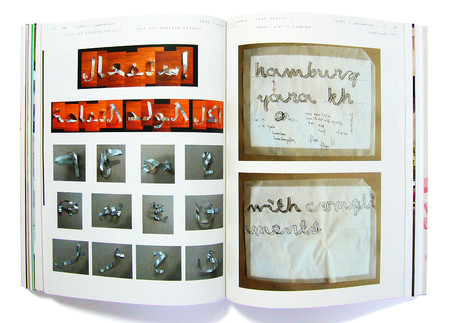
Image: 14 Dec 2010
TMMC Book : Kashida Spread2
Sample pages from the design process and sketches section of the Kashida Project. Kashida Project, is a design research collaboration for a 3D dual-script (Latin and Arabic) lettering system.
-
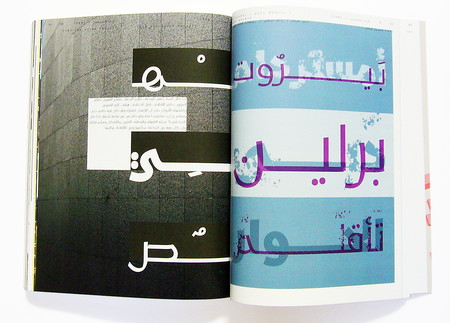
Image: 12 Dec 2010
TMMC Book : Kufam Spread1
Sample pages from the specimen sheet of the Kufam Project. Kufam Project, is a design research collaboration for an architectural dual-script (Latin and Arabic) lettering system. Designers: Artur...
-
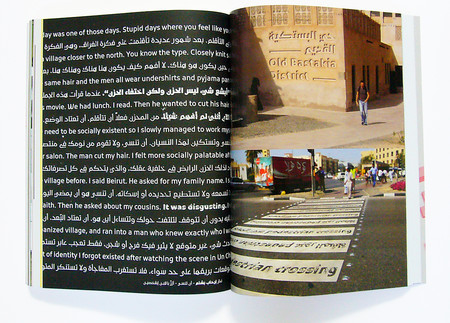
Image: 12 Dec 2010
TMMC Book : Kufam Spread2
Sample pages from the proposition for a potential design application in public space and a specimen sheet of the Kufam Project. Kufam Project, is a design research collaboration for an architectural...
-
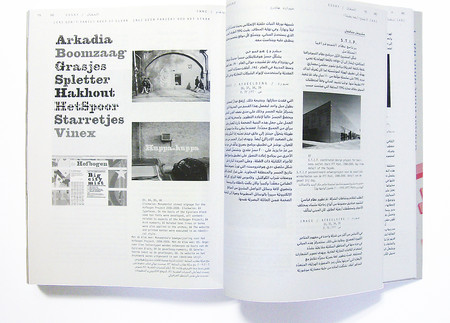
Image: 14 Dec 2010
TMMC Book : Spread Essay (Arabic)
Sample spread from essay by Gerard Hadders (in Arabic).
-
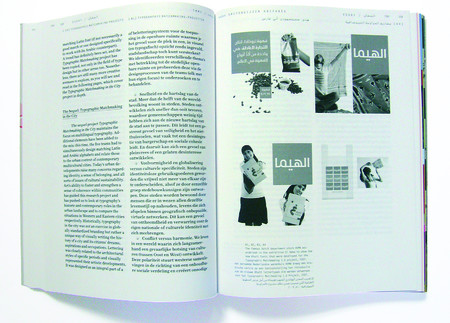
Image: 14 Dec 2010
TMMC Book : Spread Essay (English/Dutch)
Sample spread from essay by Huda Smitshuijzen AbiFares (in English & Dutch).